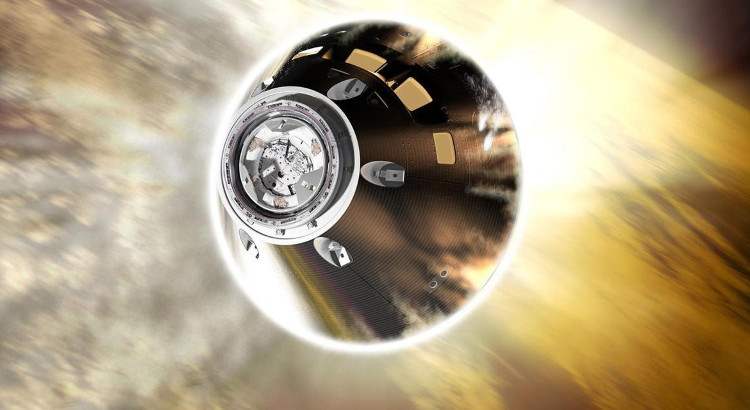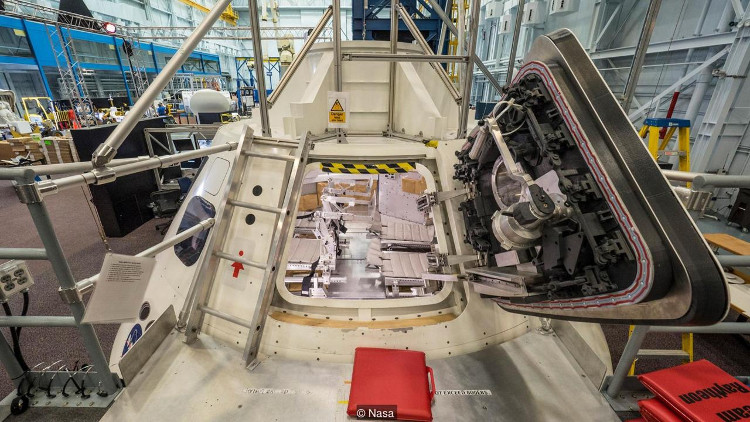Living on the space shuttle Orion is not as happy as you think
Cramped, stinking and always feeling seasick - the life inside won't be very interesting.
In 1959, when the first seven astronauts of NASA first saw the small space chamber and only for one of the Mercury spacecraft, they were not impressed. Mecury seems to have no windows and very few control buttons - the crew complains they will be no different from " canned meat".
The contradiction between astronauts 'wish is to fly in a spaceship and the engineers' desire to bring an orbiter (and return alive) is clearly illustrated in the movie The Right Stuff. . In front of such a "closed-loop" ship, astronaut John Glenn, the first American to orbit Earth, threatened to share his views with the press. The engineers gave in and designed the appropriate door and equipment designs.
Almost 60 years later, a similar scenario is happening in Houston. Currently, astronauts are negotiating with engineers about the interior design and controls of the Orion spacecraft for four, a new type of NASA ship. With the first unmanned test flight taking place in 2014, Orion will be launched into space with the crew within the next 5 years.

Orion will be launched into space with the crew within the next 5 years.
Today, the role of the character John Glenn in the film is assumed by a former submarine commander and Steve Bowen, the veteran astronaut with three times the space shuttle mission. His first impression of Orion was cramped."It is very tight for four people. The two people in the back will look straight at the pilot and commander's seat ahead."
On the surface, Orion looks like the Apollo spacecraft that brought three astronauts to the Moon. There is a cone and a heat shield to protect the surface at the bottom, the Orion vessel is wider than Apollo but not significant. And while Apollo's missions lasted only a few days, with a few steps on the Moon, Orion's mission lasted for at least three weeks and nothing came out of the ship.

NASA built a model to test Orion's internal design.
"I don't know if all four people can comfortably stretch their arms at the same time , " Bowen said. "But this has been done before. You just need to make sure you get used to the tight space."
In addition to crew and controllers, engineers also need to cram into a space ship a kitchen, entertainment area and restroom."We can make some modifications, such as seat configuration. Once completed, we will better understand the living area and how we will operate within it," Bowen said.
Although with tasks like time-consuming Mars, there will definitely be an additional living model. However, with Orion's previous flights, the total volume of 9 cubic meters is all space for the crew's work, sleep, fitness and relaxation activities. Imagine with three colleagues locked in a small room with a toilet for several weeks. In space.
"When there is a final design, we can imagine what life would be like for weeks," Bowen said. "I don't think anyone will see this ship too spacious, but I haven't seen anyone who actually complains about this limited space life."
In addition to helping to arrange objects inside the spacecraft, the crew also participated in checking the launch and landing procedures. One of the major disadvantages of space shuttle (except on previous two-person flights) is the lack of an escape system if the rocket explodes during launch. This became apparent when the Challenger ship burst shortly after takeoff in 1986, killing all 7 crew members.
Orion will be launched by NASA's new giant SLS rocket. Like Apollo, Orion will have a small escape missile above the closed compartment to pull the compartment out of the broken launch pad.

Orion that will be launched by the SLS rocket has not yet formed
"The test checks whether the system is broken during operation or not in the next few months ," Bowen said. "It is interesting to see that - we are also looking at what will happen if there are incidents at any time during the flight, so the crew has more chances to escape."
Bowen's submarine experience is particularly useful when it comes to finding the best way to ensure crew safety when they return to Earth - potentially one of the most dangerous periods. of any mission. While the shuttle lands on the runway, Orion will plunge into the ocean after entering the atmosphere at a speed of 11km / s and descending when opening the parachute.
Bowen recently oversaw Nasa's latest Orion search test off the California coast."Orion does not have a boat life [a basic part of the boat that helps in strengthening the boat frame and influences the hydrodynamics of the boat], without its own propulsion, it will basically float over the sea. - that would be an interesting trip , " he said. "I have enough experience at sea to see some of the most seasoned crew members who are seriously ill - seasick is a real possibility."
Because Orion is very heavy, the navy cannot use helicopters to lift it to the ship. Although after several weeks - maybe months or years - the crew will be desperate to leave the spacecraft, they may have to wait inside to minimize the risk of drowning when trying to get out.
"Eventually this ship will be in space for many years. If we go to Mars, the astronauts' physical condition will be very different from the previous programs," Bowen said. "So the question will be when will you take the crew out of the ship? Do you take them out as soon as they float on the ocean or you want to drag them onto the deck and take them out on dry ground? ? ".

Spaceships will carry four astronauts for missions that last several weeks.
Orion had been conceptualized more than 10 years ago but - with the goal of returning to the Moon - the program finally began to operate. With SLS missiles also forming, and with progressive testing on both launchers and spacecraft, astronauts will certainly have their first flight in 2025.
"Last week, they started welding technology on the first spacecraft that would bring people out of Low's orbit, for the first time in 50 years," Bowen said. "It is being built - it's real hardware, it's interesting."
Despite his discomfort, danger and seasickness, Bowen enjoyed flying in the Orion spaceship he helped develop. So what is the chance for you?
"Who knows , " he said socially. "I am in the space travel office, my name is still on the list, I have been through it . but I still find it interesting!".
- NASA moved a billion-dollar spacecraft flight schedule
- America postponed the test flight of the spacecraft carrying people to Mars
- America and Europe increase cooperation in space research
- NASA signed a large contract with Lockheed Martin to produce spacecraft
- Atlantis space shuttle re-exported at the exhibition
- Future Orion spaceship model
- How is NASA's shuttle fleet now?
- The first US shuttle is about to be re-exported.
- NASA tested the new generation shuttle
- Space shuttle Discovery returned to Earth safely
- 30 years after the shuttle explosion shocked the United States
- The process of picking up Orion spacecraft with a giant amphibious ship
 Van Allen's belt and evidence that the Apollo 11 mission to the Moon was myth
Van Allen's belt and evidence that the Apollo 11 mission to the Moon was myth The levels of civilization in the universe (Kardashev scale)
The levels of civilization in the universe (Kardashev scale) Today Mars, the sun and the Earth are aligned
Today Mars, the sun and the Earth are aligned The Amazon owner announced a secret plan to build a space base for thousands of people
The Amazon owner announced a secret plan to build a space base for thousands of people